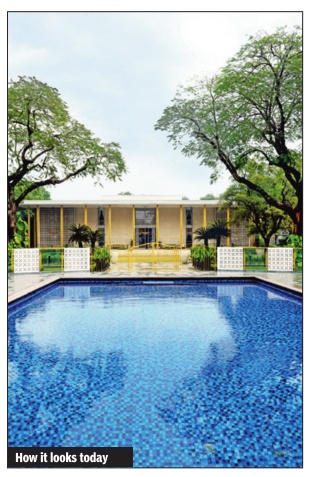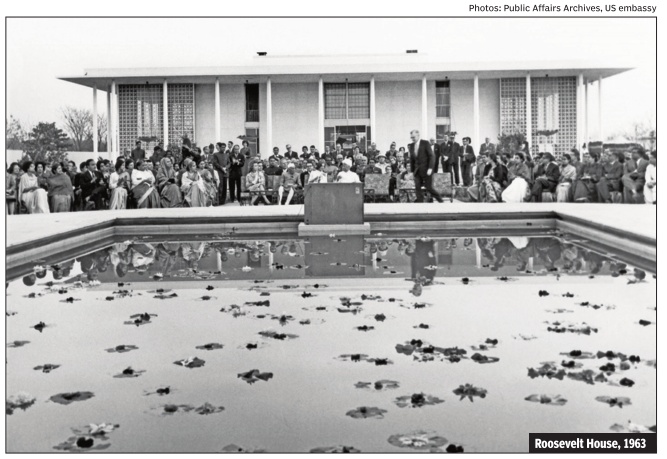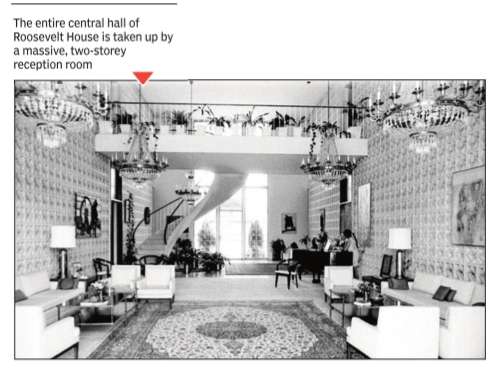Delhi: Chanakyapuri
This is a collection of articles archived for the excellence of their content. |
Roosevelt House
Richi Verma, Dec 11 2016: The Times of India



Roosevelt House in the capital has been the home of the US envoy to India since the early 1960s. Built by famous American architect Edward Stone, this grand edifice was inspired by the Taj
In 1960, renowned American architect Edward Stone gazed awestruck at the marvel that is the Taj Mahal.
The serenity of the structure and its surroundings was still stuck in his mind when he started designing the private residence of the US ambassador to India at Chanakyapuri. Almost 50 years later, Stone's creation, Roosevelt House, has become the first diplomatic building in India to be designated a culturally significant property of the United States government.
Six other American diplomatic buildings across the globe share the status given to Roosevelt House and they fall in the US secretary of state's register of culturally significant property. The register, started in 2000 as a White House millennium project, lists 33 others as significant US international heritage.
Historians characterise Roosevelt House as a structure that blends the finest characteristics of traditional Indian and mid-20th century American architecture. Around 450 skilled Indian craftsmen worked for 18 months from February 11, 1961 onward to complete the building.In interviews given shortly afterward, Stone pointed out the influence of the Taj Mahal on Roosevelt House in the serene lagoon built in the rectangular courtyard of the building.
The first occupants of Roosevelt House were the then US ambassador to India, John Kenneth Galbraith, and his wife. The Galbraiths formally dedicated their residence to the memory of the 32nd US president, Franklin Delano Roosevelt, in January 1963, after the then president, John F Kennedy, suggested it be named Roosevelt House in recognition of the former president's “long and deep sympathy for the Indian people“.
Virtually everything used in the build ing's construction was of Indian provenance, one of the US department of state's basic tenets being to ensure that American embassies abroad should as far as possible be constructed with local labour and resources and be in consonance with the cultural, architectural traditions and climatic conditions of the countries where they were located. “Indian building materials like Dholpur, Agra and Kota stones were used,“ said a researcher. “White Makrana marble has been employed in the bathrooms and elsewhere.The blue canopies are also Indian made.“
Archival material records that Stone adopted the device of Hindu and Mughal architecture using pools, fountains and water gardens both to beautify and to create a cool environ around a building.Stone “planned an enclosed court and water garden screened by metal-mesh aluminium to break the sunlight and give it the effect of light filtering through branches of trees. And to set off the building, Stone decided to have an exterior pool reflect the beauty of the edifice“, says one reference text.
Not all American ambassadors were happy living in Roosevelt House. While Galbraith compared residing there with being on a balcony overlooking the main concourse of Grand Central railway station in New York, ambassador Chester Bowles and his wife declined to move in.Elizabeth Moynihan, wife of ambassador Daniel Moynihan, who was posted in In dia from 1973 to 1975, unhappily called their official mansion “pretentious“. Her main gripe was that there was virtually no privacy for anyone living in the grand house.